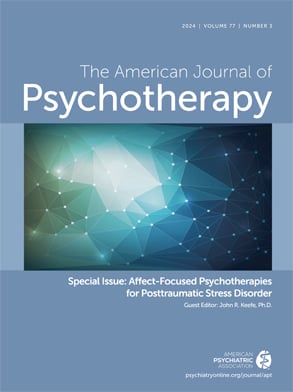Psychotherapy integration has been an ambitious objective, starting with an attempt to integrate Freud and Pavlov at a conference of the American Psychiatric Association in 1932 (
French, 1933). At that early stage of identifying differential treatments, the idea of integration was extraordinary and clearly had very little support. Key ideas on integration were not seriously considered until the 1980s (Norcross & Goldfried, 2005). Three principle components of integration have been delineated, which are the therapeutic relationship, meaning-making, and change promotion (
Castonguay & Beutler, 2006).
The first wave of behavior therapy (BT) was associated with the scientific respectability of learning theory and the body of research that supported this theory (
Hayes, 2004). This therapy relied heavily upon operant conditioning, creating change by considering behavior within the context of its antecedents and consequences. Thus, it moved well beyond the Freudian inspired therapy of the day, which lacked scientific respectability. Consequently, to provide scientific bases for BT, change strategies were implemented to act directly upon symptoms, thus creating a more obvious link between therapeutic strategies and client change in a bid for evidence-based practices. These approaches included operant conditioning, exposure therapy, arousal reduction interventions, skills training, and behavioral activation (
Taylor, & Steel, 2008).
The second wave of behavior therapy was associated with client cognition through emphasis on CBT. Private thoughts were defined as objective, observable behavior, providing the required scientific bases for altering these thoughts through direct challenge of some thoughts and substitution of other more appropriate or helpful thoughts. This very quickly spread into a range of cognitive therapies associated with
Beck (1976),
Ellis and Harper (1975), and
Meichenbaum (1977). The scientific respectability of CBT was related to its base in learning theory, with an emphasis on techniques to directly alter client beliefs. Cognitive behavior therapy challenged the validity of client thoughts, rather than attempting to understand them within the context of these thoughts. Thus, emotional processing was not necessarily the first line of action, as attempts were made to modify the beliefs associated with the emotion, thereby changing the antecedent emotional regulation strategies (
Hofmann & Asmundson, 2008). The strategies included behavioral activation, cognitive restructuring, psycho education, and relaxation training. Using questions was particularly important in CBT, and reflected a change in therapist attitude towards confrontation (
James & Morse, 2007). Socratic questioning was used to help clients achieve insights that were derived from their answers to these questions (James, Morse, & Howard, 2010). Thus, these questions helped clients discover inconsistencies in their own thinking, and provided them with new insights (
Overholser, 1993). Consequently, rather than simply eliciting information from a client so that the therapist could directly challenge thoughts, these questions provided information to the client (
Brown, 1997;
James, Morse, & Howarth, 2010). This form of questioning, drawn from a broad range of therapeutic approaches, demonstrated some movement towards integration and also allowed for a less directive form of therapy because clients challenged their own thinking through the answers they provided to questions asked.
The third wave of behavior therapy was associated with
Hayes’ (2004) acceptance and commitment therapy (ACT), and made even more moves toward psychotherapy integration. However, there was some controversy as to whether ACT was beginning a new third wave or, according to
Zettle (2005), was another approach of a group of therapies that superseded the second-wave CBT therapies, such as functional analytic psychotherapy (
Kohlenberg & Tsai, 1991), dialectical behavior therapy (
Lineham, 1993), integrative behavioral couples therapy (
Jacobson & Christensen, 1996) and mindfulness-based cognitive therapy (
Segal, Williams, & Teasdale, 2002). ACT focused on the contextual and functional meaning of behavior through its emphasis on functional contextualism and associated research on language and cognition (
Hayes, 2004).
Hayes (2004) stated for example, that anxiety was not the problem, but the tendency to fight against that anxiety, emphasizing the contextual nature of the problem, much in line with many of the systemic therapies in the 1970s and 1980s (e.g.
Watzlawick, Weakland, & Fisch, 1974). As
Hayes (2004) stated: “. . . Thus ACT relies heavily on paradox, metaphors, stories, exercises, behavioral tasks, and experiential processes, while logical analysis has a relatively limited role” (p 652). He also suggested that ACT was breaking down some of distinctions between BT and some older, less researched therapies. With regard to emotion regulation, it was suggested that ACT relied upon response-focussed emotion regulation strategies (
Hofmann & Asmundson, 2008). The list of techniques were drawn from experiential therapies, mindfulness, gestalt therapy, and a range of other sources including psycho-education, problem-solving, behavioral homework, skills building, exposure and other interventions developed in the first and second waves of behavior therapy (Hayes, Strosahi, Bunting, Twohig, & Wilson, 2004; Singh, Lancioni, Wahler, Winston, & Singh, 2008). The three waves of behavior therapy are important in the development of significant advances in psychotherapy integration. While the first wave differentiated itself from Freudian therapy with an emphasis on behavior change, the second wave reconnected itself with a more insight-oriented therapy by defining and exploring cognitions such as behavior and also represented an integration between the first and second waves. Finally, by the third wave, there was a recognition that therapy could not reside with only one perspective. These ideas coexist with ideas associated with the target of intervention, which encapsulates therapies past and present where therapeutic strategies move between changing the targeted behavior and the context around the targeted behavior. Thus, a form of integration is becoming more apparent in the prime example of an EST. The three waves of BT have moved from a focus on the specific behavior to the context of the behavior, which was fundamental in the change strategies that evolved in the systemic therapies, where first-and second-order change highlighted an important distinction in explaining the mechanism of therapeutic change. The target of intervention: the actual behavior or the context of the behavior, has also highlighted an important principle of change through the distinction between first and second order change.

